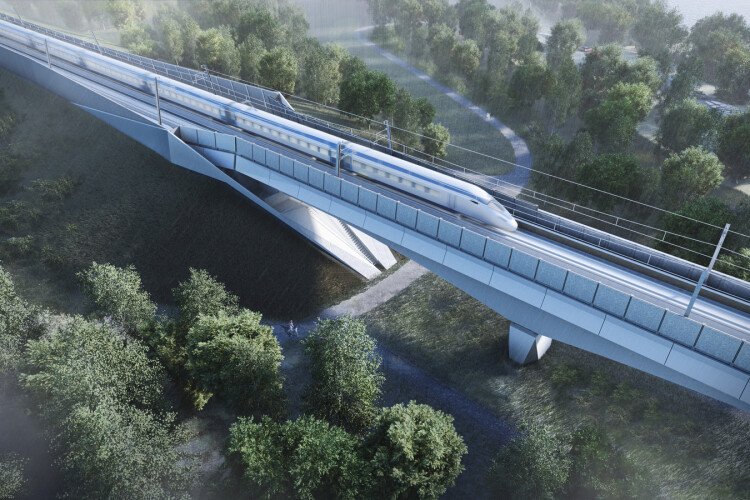Piling has begun for the foundations for the 3.4km-long Colne Valley Viaduct.
Nearly 300 piles are being bored to support the viaduct, which will carry the new high-speed rail line across a series of lakes and waterways on the northwest outskirts of London.
It will be almost 1km longer than the Forth Rail Bridge and carry trains expected to travel at speeds of up to 200mph.
With spans of up to 80 metres long, the structure will be supported by 56 piers, carrying the railway around 10 metres above the surface of the lakes, the River Colne and the Grand Union Canal.
HS2’s main works contractor for this section is Align JV – comprising Bouygues, Sir Robert McAlpine and VolkerFitzpatrick. Its design team comprises the engineers Jacobs and Ingerop-Rendel, and the architect Grimshaw.
The piling work is being carried out by a joint venture of Keller and VSL International (KVJV), which has a £167m contract with Align for geotechnical work as part of the C1 package on HS2. [See previous report here.]

The main deck of the viaduct will be built in sections at a temporary factory nearby before being assembled from north to south.
Align project director Daniel Altier said: “I have no doubt that the viaduct will become one, if not the most striking element of HS2 phase 1 once complete. The way it will be constructed is going to be equally fascinating for engineers young and old. The sections for the deck will be fabricated at our main construction site to the west of London just inside the M25, and using a huge launching girder, the deck will be formed from north to south, along the line of the route, thereby keeping unnecessary construction traffic off the roads.”
A programme of test piling has already been completed with engineers sinking 12 piles at two locations with geological and structural data from these tests fed back into the design of the viaduct. This has resulted in a 10-15% reduction in the depth of the piles and associated time and cost savings. The deepest piles are going down 55 metres
Got a story? Email news@theconstructionindex.co.uk





